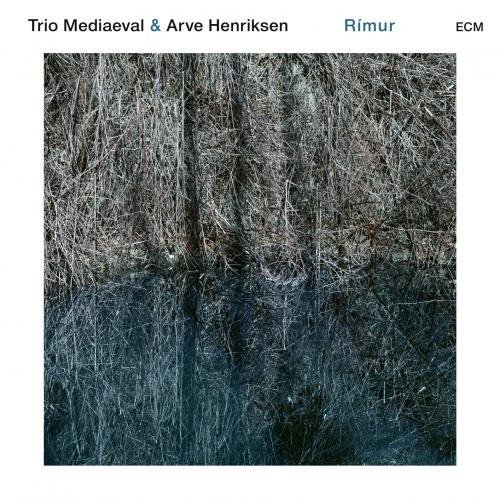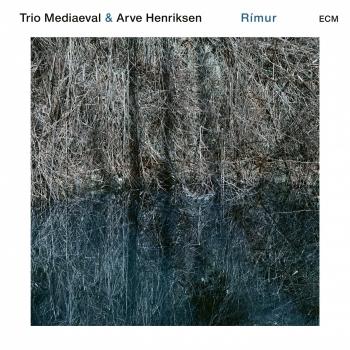
Album info
Album-Release:
2017
HRA-Release:
03.03.2017
Album including Album cover Booklet (PDF)
I`m sorry!
Dear HIGHRESAUDIO Visitor,
due to territorial constraints and also different releases dates in each country you currently can`t purchase this album. We are updating our release dates twice a week. So, please feel free to check from time-to-time, if the album is available for your country.
We suggest, that you bookmark the album and use our Short List function.
Thank you for your understanding and patience.
Yours sincerely, HIGHRESAUDIO
- 1 St. Birgitta Hymn - Rosa rorans bonitatem 04:23
- 2 O Jesu dulcissime 05:05
- 3 Om ödet skulle skicka mig 01:19
- 4 Morgunstjarna 03:07
- 5 Rís upp, drottni dýrð 01:06
- 6 St. Magnus Hymn - Nobilis humilis 04:24
- 7 Láta gjalla létt og hátt 02:38
- 8 Brureslått 03:15
- 9 St. Sunniva Hymn - Eterna Christi munera 03:56
- 10 Krummi 02:25
- 11 Anda þinn guð mér gef þú vist 03:29
- 12 Sulla lulla 02:16
- 13 Du är den första 04:06
- 14 Alma Redemptoris Mater 02:40
- 15 Bíum bíum bambaló 02:23
- 16 Jag haver ingen kärare 02:11
- 17 Gammelkjerringvalsen 02:10
Info for Rímur
With their seventh album, the scope of Trio Mediaeval’s music continues to expand. Previous ECM New Series releases have focussed on aspects of early music, particularly sacred monophonic and polyphonic medieval music, as well as the trio’s strong relationships with contemporary composers. In parallel, the trio has also investigated the world of traditional folk songs. Now Rímur emphasises the group’s interest in improvisation, in a collaboration with trumpeter Arve Henriksen, which also explores music from diverse Northern sources.
As Ana Maria Friman indicates in her liner note, improvisation has long been a significant component of Nordic musical tradition, and Trio Mediaeval has embraced it with enthusiasm. “Over the last ten years we have been fortunate to be involved in new collaborative projects with Norwegian jazz musicians and improvisers, and the inspiration and creativity that these musicians brought to the music and to the group have been hugely significant for us.” The trio has worked with Tord Gustavsen, Trygve Seim, Nils Økland, Mats Eilertsen, and many others. Arve Henriksen has often performed with Trio Mediaeval in live settings (and the singers and trumpeter appear together on Sinikka Langeland’s recent recording The Magical Forest) but Rímur is their first extensive collaboration on disc.
The roots of the present project go back to 2007 when Trio Mediaeval and Arve Henriksen took part in a ceremony in Dalksfjorden on Norway’s west coast celebrating connections between the village of Rivedal and the Icelandic capital of Reykyavík, founded by Norse settler Ingólfr Arnarson.
Over several summers Trio Mediaeval and Arve Henriksen spent many days together in Dalsfjorden, and it was there that most of the music for this recording was born. Fascinated and inspired by Icelandic sagas, chants, folk songs, religious hymns and fiddle tunes, the four musicians have arranged a unique set of songs where improvisation, mediaeval and traditional music - from Iceland, Norway, Sweden and the Orkney islands - meet the present. Something new is created from the integration of Henriksen’s liquid trumpet sound into the Trio Mediaeval’s subtle blending of voices.
“In this recording,” writes Anna Maria Frimann, “we celebrate three saints with their famous medieval hymns: the monophonic chants of St Sunniva of Norway, St Birgitta of Sweden and a two-voice hymn of St Magnus of Orkney. It’s hard for us to imagine now, but until quite late in the medieval period relatively little sacred polyphony was heard at all. Monophonic chant was the rock on which almost all musical experience was founded. In this context, even music composed for just two voices would have made a very special impression. The 17th century Icelandic Tvísöngur were originally two-part songs rather like the kind of improvised parallel organum known all over medieval Europe. Rímur, songs in the unique Icelandic tradition of rhyming narrative verse, were originally performed by kvæðamenn (or women) who went from farmstead to farmstead and were offered hospitality when reciting an evening wake. Like most of the Scandinavian folk songs the Rímur have been orally transmitted for centuries. Later in the twentieth century ethnographers and folk song collectors began to record these wonderful songs and tunes, and a vast number of melodies have been transcribed and preserved for future generations of singers and listeners.”
Trio Mediaeval was founded in Oslo in 1997. Its original members were Anna Maria Friman, Linn Andrea Fuglseth, and Torunn Østrem Ossum. When Torunn left the group at the end of 2013, she was replaced by Berit Opheim, who had been singing regularly with the ensemble since 2010. First album with the revised line-up was Aquilonis, released in 2014.
Arve Henriksen has appeared on many ECM albums over the last two decades, beginning with the 1996 recording No Birch with the Christian Wallumrød Trio. He was recently featured in the Atmosphères quartet with Tigran Hamasyan, Evind Aarset and Jan Bang. Sampled voices of The Trio Mediaeval were incorporated into Henriksen’s Cartography (recorded 2005-2008), an album on which Anna Maria Friman also makes a guest appearance.
Trio Mediaeval:
Anna Maria Friman, voice, hardangar fiddle
Linn Andrea Fuglseth, voice, shruti box
Berit Opheim, voice
Arve Henriksen, trumpet
Recorded in February 2016 at Munich’s Himmelfahrtskirche, Germany
Produced by Manfred Eicher
No biography found.
Booklet for Rímur










